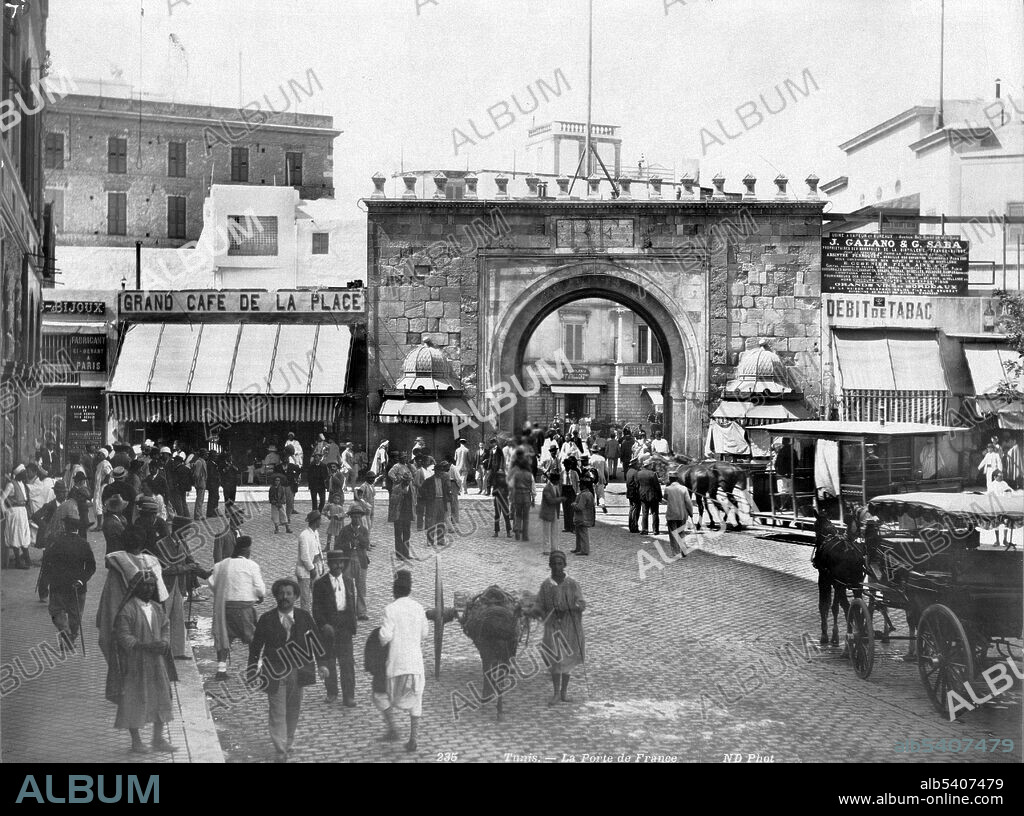alb5407479
Tunis, Bab el Bhar,19th Century

|
Zu einem anderen Lightbox hinzufügen |
|
Zu einem anderen Lightbox hinzufügen |



Haben Sie bereits ein Konto? Anmelden
Sie haben kein Konto? Registrieren
Dieses Bild kaufen.
Nutzung auswählen:

Titel:
Tunis, Bab el Bhar,19th Century
Untertitel:
Siehe automatische Übersetzung
Bab el Bhar, also known as Porte De France, is a city gate in Tunis, the capital of Tunisia. It marks the separation between the Medina of Tunis and the European city. The gate is made up of a lowered archway and topped by a crenellated parapet. Tunis is the capital and the largest city of Tunisia. In ancient times, Tunisia was primarily inhabited by Berbers. Phoenician immigration began in the 12th century BC; these immigrants founded Carthage. A major mercantile power and a military rival of the Roman Republic, Carthage was defeated by the Romans in 146 BC. The Romans, who would occupy Tunisia for most of the next 800 years, introduced Christianity and left architectural legacies like the El Djem amphitheater. The Muslims conquered the whole of Tunisia by 697, followed by the Ottoman Empire between 1534 and 1574. The Ottomans held sway for over 300 years. The French colonization of Tunisia occurred in 1881. Tunisia gained independence with Habib Bourguiba and declared the Tunisian Republic in 1957. Neurdein frer`es, between 1860 and 1900.
Bildnachweis:
Album / Science Source / Library of Congress
Freigaben (Releases):
Model: Nein - Eigentum: Nein
Rechtefragen?
Rechtefragen?
Bildgröße:
4350 x 3241 px | 40.3 MB
Druckgröße:
36.8 x 27.4 cm | 14.5 x 10.8 in (300 dpi)
 Pinterest
Pinterest Twitter
Twitter Facebook
Facebook Link kopieren
Link kopieren Email
Email
